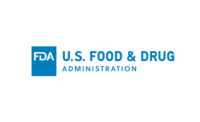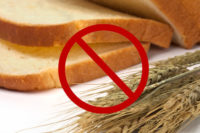A Food and Drug Administration (FDA) advisory committee evaluating the connection between food coloring and hyperactivity narrowly voted against recommending European-style warning labels on products containing artificial food colors in the United States.
After a two-day hearing at Silver Springs, Md., the International Food Information Council (IFIC), Washington, D.C., ruled that it agrees with an FDA report that the link between food dyes and Attention Deficit Hyperactivity Disorder (ADHD) has not been established. The panel also narrowly voted to recommend that no changes to labels are needed. They’re debating whether more research is needed and generally agree that there is.
The Center for Science in the Public Interest (CSPI) urged the committee to recommend warning labels on pack, alerting shoppers to the alleged risks raised by eight approved artificial food colors. CSPI executive director Michael Jacobson said he was disappointed that the committee chose not to opt for labels, adding, "instead of asking whether there was virtual proof that dyes cause hyperactivity-huge challenge-the agency should have asked whether there is convincing evidence that dyes do not impair children's behavior."
But the hearing hadn’t been in vain, he insists: "A year ago, the agency maintained that there was no evidence that dyes affect children's behavior. Now the agency recognizes that dyes do affect some children. That's an important change," he says.
Still, the IFIC welcomed the decision not to push for labeling as a victory for common sense. Lindsey Loving, senior director, food ingredient and technology communications said, “The fact that the committee did not push for a warning statement is in line with what the science shows, which is that there is insufficient evidence to support a causal link between food colors and hyperactivity in children. Adding a warning statement could confuse the general public for whom the message is not intended, and could cause alarm regarding safe food ingredients that have been consumed by the general public for years. Research will likely continue by those invested in the issue, but as far as the safety of food colors, the existing research establishes their safety.”
While some manufacturers used the publicity surrounding the hearings to highlight their avoidance of artificial colors and flavors, notably The Hain Celestial Group, Melville, N.Y., which has called for warning labels to alert shoppers to their presence on the front of pack, the results could not be used as a basis for altering the acceptable daily intakes of the colors in question. Chief executive Irwin Simon said, "Health concerns about artificial flavors and colors are not new, and our quality standards prohibit them, especially in children's products.”
Source: www.foodnavigator-usa.com
Related Articles
Related Products
See More ProductsSee More ProductsEvents
View AllSubmit An Event-
June 14, 2012 Building a Regulatory Strategy for Marketing Food Supplements in Europe: The key steps to a successful product launch
×
Get our new eMagazine delivered to your inbox every month.
Stay in the know on the latest snack and bakery industry trends.
SUBSCRIBE TODAY!Copyright ©2024. All Rights Reserved BNP Media.
Design, CMS, Hosting & Web Development :: ePublishing





